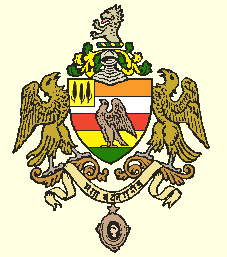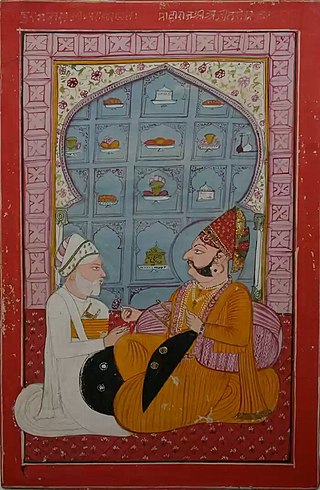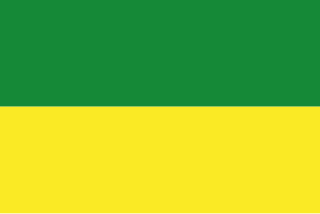
Ratlam is a city in the northwestern part of the Malwa region in Madhya Pradesh state of India. The city of Ratlam lies 480 metres (1,570 ft)above sea level. It is the administrative headquarters of Ratlam district, which was created in 1947 after the independence of India. It is located 294 kilometres west of the state capital Bhopal.

The Rathore dynasty or Rathor dynasty was an Indian dynasty belonging to the Rathore clan of Rajputs that has historically ruled over parts of Rajasthan, Gujarat and Madhya Pradesh.

Sailana is a town in the Malwa region of the Indian state of Madhya Pradesh. Sailana is 25 km (16 mi) from Ratlam city and 50 km (31 mi) away from Banswara district of the neighboring state of Rajasthan.
Sailana was once the capital of the Sailana State before it merged into India. A fort belonging to the former royal family still stands tall in Sailana. The Kedareshwar temple, situated 4 km (2.5 mi) from Sailana is a notable shrine.

Durgadas Rathore was the Rathore Rajput General of the Kingdom of Marwar. He is credited with having preserved the rule of the Rathore dynasty over Marwar, India, following the death of Maharaja Jaswant Singh in the 17th century. In doing so he had to defy Aurangzeb, a Mughal emperor. He commanded the Rathore forces during the Rajput War (1679–1707) and played a major role in the Rajput Rebellion (1708–1710) and supported the Maratha ruler Sambhaji in the Siege of Janjira aganist the Siddis of Janjira. He was elected as the leader of the revolt along with Raja Jai Singh II of Jaipur. He won a number of victories against the Mughals and forced many Mughal officers to pay tribute to him in the form of chauth.

Rao Maldeo Rathore was a king of the Rathore dynasty, who ruled the kingdom of Marwar in present day state of Rajasthan. Maldeo ascended the throne in 1531 CE, inheriting a small ancestral principality of Rathore's but after a long period of military actions against his neighbours, Maldeo swept significant territories which included parts of present day Rajasthan, Haryana, Uttar Pradesh, Gujarat and Sindh. He refused to ally with either the Sur Empire or the Mughal Empire.

Raja Jaswant Singh I was the Rathore Rajput ruler of the Kingdom of Marwar in the western part of Rajputana modern day Rajasthan .He was a distinguished man of letters and author of noted literary works like "Siddhant-Bodh", "Anand Vilas" and "Bhasha-Bhushan".

Idar State, also known as Edar, was a princely state located in present-day Gujarat state of India. During the British era, it was a part of the Mahi Kantha Agency, within the Gujarat Division of Bombay Presidency.

Rao Amar Singh was the eldest son and heir-apparent of Raja Gaj Singh I of the Rathore Kingdom of Marwar in seventeenth-century Rajputana.

Udai Singh II was the Maharana of Mewar and the founder of the city of Udaipur in the present-day Rajasthan state of India. He was the 12th ruler of the Kingdom of Mewar. He was the fourth son of Rana Sanga and Rani Karnavati, a princess of Bundi.

Udai Singh, often referred as the Fat was the Rathore ruler of Marwar, which was later known as Jodhpur. He was also the maternal grandfather of Shah Jahan, the fifth Mughal Emperor, and an ancestor of all subsequent emperors.

Kingdom of Marwar, also known as the Jodhpur State under the British, was a kingdom in the Marwar region from 1243 to 1818 and a princely state under British rule from 1818 to 1947. It was established in Pali by Rao Siha, possibly a migrant Gahadavala noble, in 1243. His successors continued to struggle against regional powers for domination and 9 out of 15 rulers till 1438 died in combat. In 1395, its capital was changed to Mandore by Rao Chunda of Mandore and to Jodhpur in 1459 by Rao Jodha.

Maharao Chatra Sal or Shatru Sal (1632–1658) was one of the most prominent and illustrious ruler of Hada-Chauhan dynasty of the Kingdom of Bundi. He built the temple of Keshavrao at Kishorai-Patan and Chatra Mahal in the upper storey of Taragarh Fort,Bundi.

Ratlam State was a 13 gun salute princely state in India, part of the Malwa Agency of Central India during the British Raj.

Sitamau State was a princely state of the British Raj before 1947. Its capital was in Sitamau town, Mandsaur district, Madhya Pradesh. The total area of the state was 350 square miles. The average revenue of the state was Rs.130,000.
Raja Askaran was a late sixteenth-century Kachwaha Rajput ruler. Though briefly Raja of Amber, for the majority of his life Askaran was the ruler of Narwar. He along with his sons and grandsons also had a distinguished career as military officers and noblemen under Mughal Emperor Akbar and rose high in his service. He was also the maternal grandfather of Manavati Bai of Marwar consort of Emperor Jahangir and mother of Emperor Shah Jahan,hence maternal great grandfather of Shahjahan.

Manavati Bai, also spelled Manvati Bai,, better known by her title, Jagat Gosain, was the second wife and the empress consort of the fourth Mughal emperor Jahangir and the mother of his successor, Shah Jahan.

Sawai Raja Soor Singh or Suraj Mal or Suraj Singh, was the ruler of the Rathore Kingdom of Marwar .His sister Manawati Deiji/Bilqis Makani was the consort of Mughal Emperor Jahangir and mother of his successor Mughal Emperor Shah Jahan.
The battle of Dharmat was fought during the Mughal war of succession (1658–1659) by Aurangzeb against Jaswant Singh Rathore who was allied with the Mughal prince Dara Shikoh. The battle was fought on the open plain of Dharmat on the hot Summer day of 15 April 1658 in which Aurangzeb won a decisive victory due to advantage in artillery and tactics.
After the mid-16th century, many Rajput rulers formed close ties with the Mughal emperors and served them in various capacities. It was because of the support of the Rajputs that Akbar was able to lay the foundation of the Mughal Empire in India. The vassals had their daughters and sisters married to the Mughal emperors and their princes. The successors of the Mughal emperor Akbar, the mothers of his son Jahangir and grandson Shah Jahan were Rajputs. The Sisodia Rajput family of Mewar made it an honor not to enter into matrimonial relations with the Mughals, and thus stood in contrast to all other Rajput clans. After this time, the marital relations between the Rajputs and the Mughals declined somewhat. Akbar's relations with the Rajputs began when he returned in 1561 from a visit by the Chisti Sufi Shaikh of Sikri, west of Agra. Then many Rajput princesses married Mughal emperor Akbar.
















